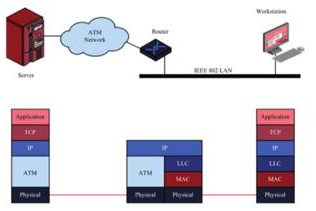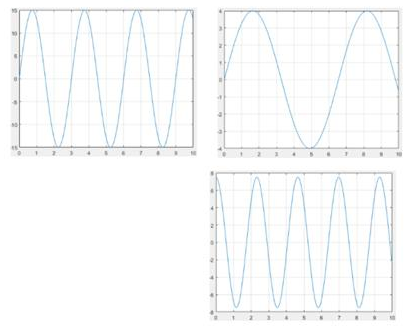Question 1: Describe the process of communication between two hosts attached to different networks shown below. Explain it in sub-steps with the help of diagrams.

Question 2: Compute the amplitude, frequency, time period and phase for each of the following equations.
a. 8Sin(2π(500)t)
b. 3Sin(600t + 45)
c. 6Sin(400t + 135)
d. 2Sin(1000t + 180)
Question 3: From the following figures, compute the maximum amplitude, frequency, time period and phase for each of the wave. The x-axis represents the time in sec and y-axis represents the amplitude.

Question 4: Given a signal as follows, compute the fundamental frequency, spectrum and bandwidth. Also calculate the channel capacity using Shanon criteria when SNR(db) = 250dB.
s(t) = 5 sin(100πt) + sin(300πt) + sin(600πt)
Question 5: Explain how the data rate over a channel can be increased, without increasing the bandwidth. What is the disadvantage of this approach? Hint: Nyquist Theorem.
Question 6: What is the main difference between Circuit switching and Packet switching Virtual Circuit? Also discuss the advantages of Packet switching over Circuit Switching and vice versa.
Question 7: In a LOS communication, consider d = 40km, the requirement is to make two antennas (transmitter and receiver) such that the height of one antenna should be three times of the other. Considering this, find the appropriate heights of these two antennas.
With our Wireless Networks and Communication Assignment Help service, you will always get the most authentic, plagiarism free, and faultless assignment paper, that no other can provide.
Tags: Wireless Networks and Communication Assignment Help, Wireless Networks and Communication Homework Help, Wireless Networks and Communication Coursework, Wireless Networks and Communication Solved Assignments, Circuit switching and Packet switching Assignment Help, Circuit switching and Packet switching Homework Help, Nyquist Theorem Assignment Help, Nyquist Theorem Homework Help